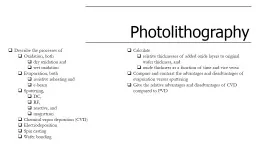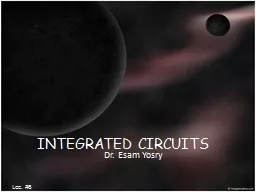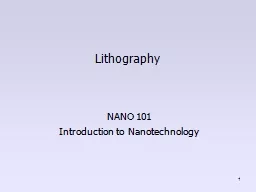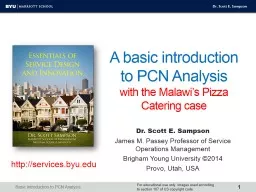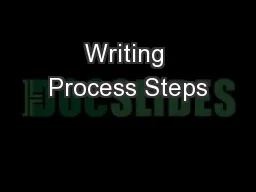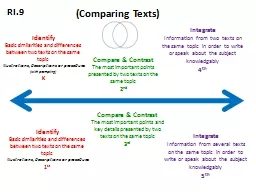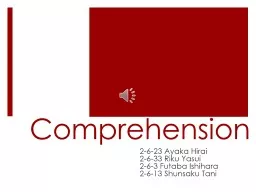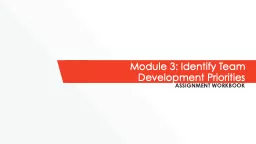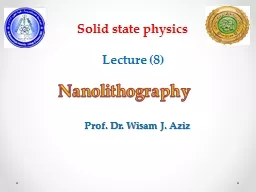PPT-Photolithography Identify the basic steps of a photolithographic process
Author : kittie-lecroy | Published Date : 2018-10-29
Describe the differences between positive and negative photoresist Explain why photolithography requires a clean environment Classify cleanrooms using both ISO
Presentation Embed Code
Download Presentation
Download Presentation The PPT/PDF document "Photolithography Identify the basic step..." is the property of its rightful owner. Permission is granted to download and print the materials on this website for personal, non-commercial use only, and to display it on your personal computer provided you do not modify the materials and that you retain all copyright notices contained in the materials. By downloading content from our website, you accept the terms of this agreement.
Photolithography Identify the basic steps of a photolithographic process: Transcript
Download Rules Of Document
"Photolithography Identify the basic steps of a photolithographic process"The content belongs to its owner. You may download and print it for personal use, without modification, and keep all copyright notices. By downloading, you agree to these terms.
Related Documents

